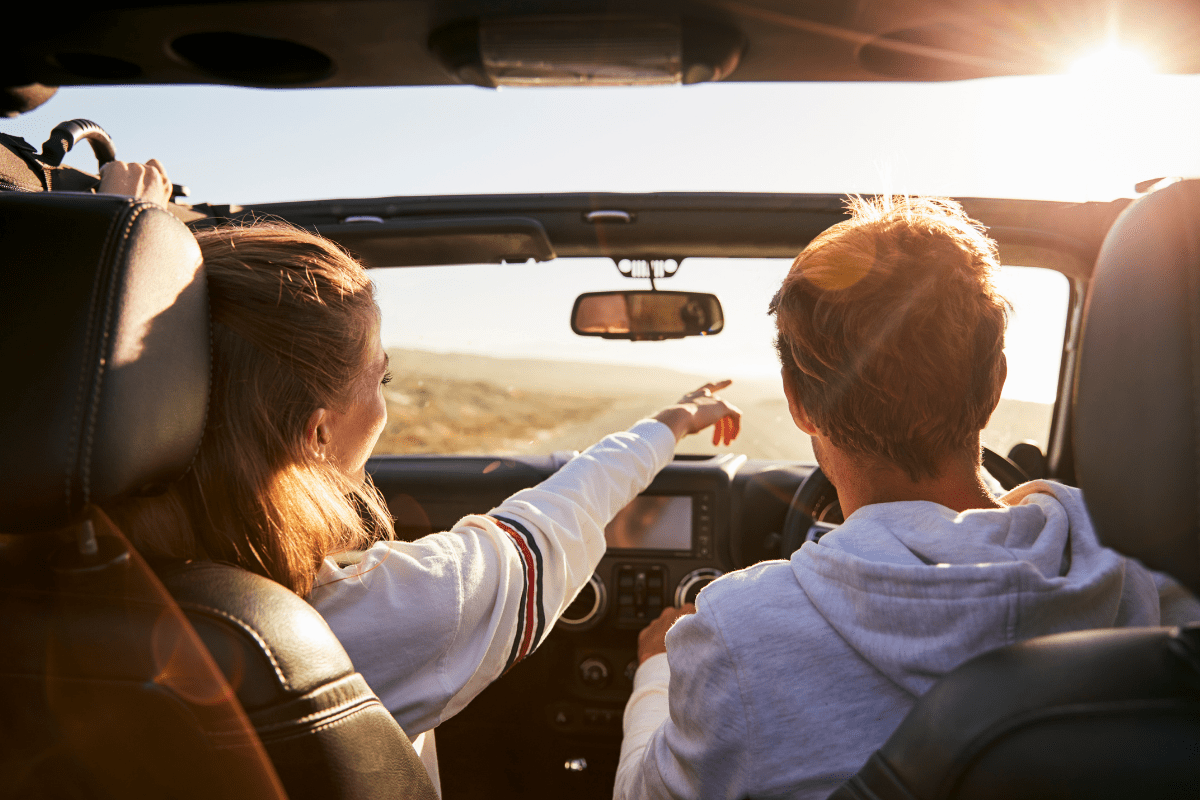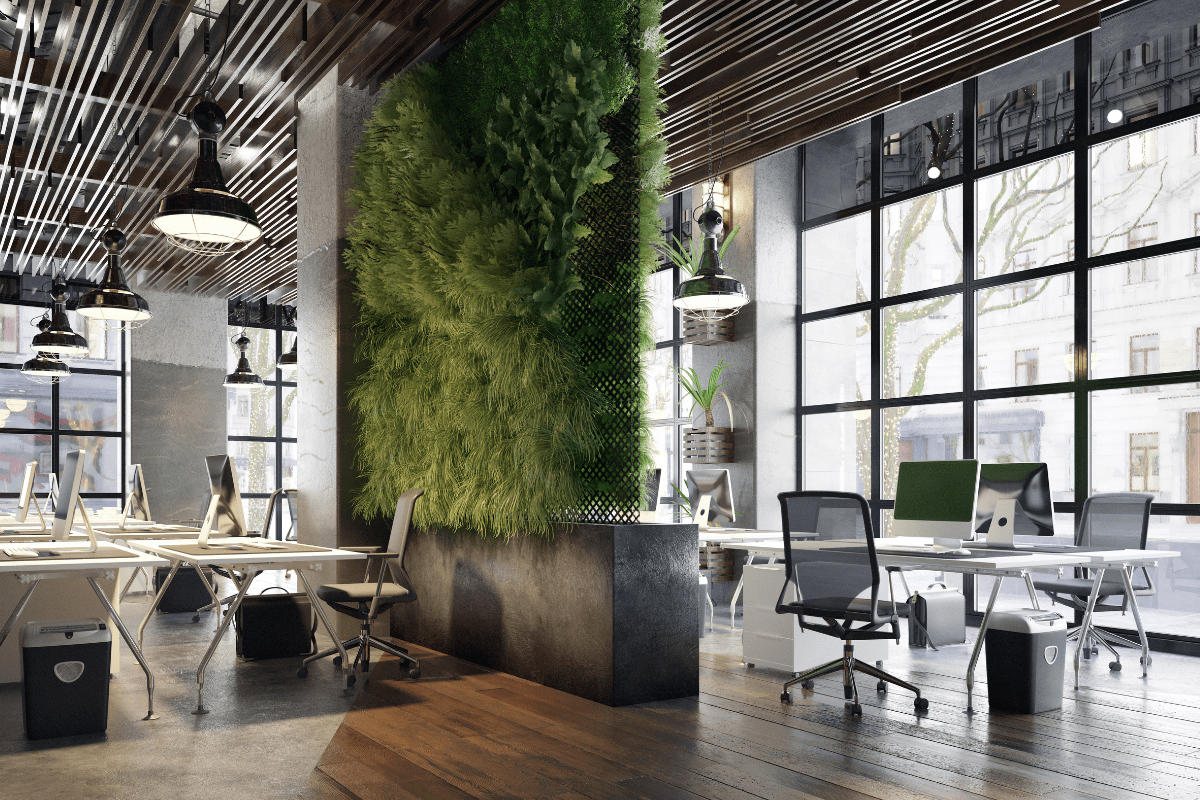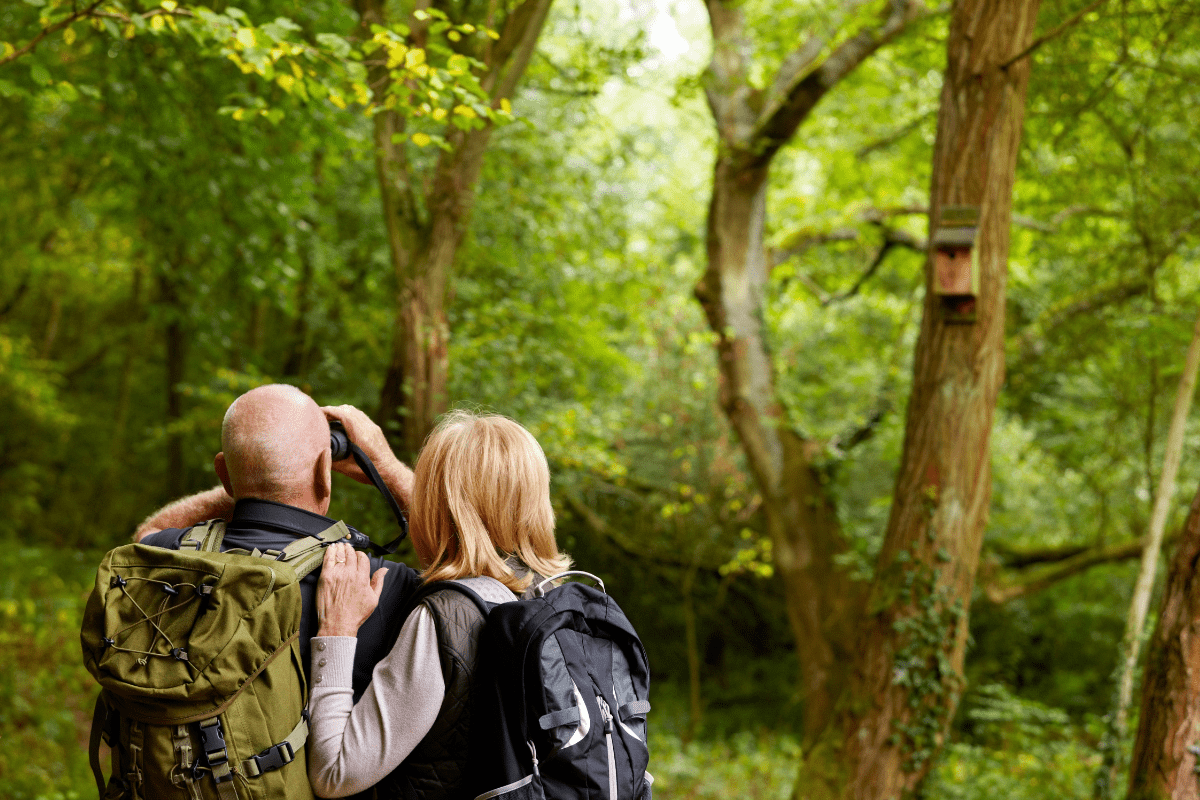Montana's highways hide some seriously strange stuff. From toxic lakes that kill birds on contact to underground cities where bootleggers once ruled, the Big Sky State serves up roadside attractions that make you question reality.
These aren't your typical tourist traps… they're genuinely weird slices of frontier life that somehow became legitimate attractions.
The most toxic tourist attraction in America
Let me tell you about the strangest $5 I've ever spent. The Berkeley Pit in Butte is literally a toxic waste lake that charges admission to look at it. And people pay! Including me, obviously.
What makes Berkeley Pit so bizarre
This former copper mine contains 40 billion gallons of water with a pH of 4.1, which is somewhere between vinegar and battery acid. The water contains 21 different metals that create these stunning rainbow colors… red, orange, yellow, green. It's beautiful in the most apocalyptic way possible.
Here's the really dark part: in 1995, a flock of 342 snow geese landed on the water and died within hours. Now they use noise cannons and drones to scare birds away. The pit even got featured on Comedy Central's Daily Show as one of America's most absurd tourist destinations, which honestly just made more people want to visit.
The viewing platform at 300 Continental Dr operates March through November, and yes, it's worth the five bucks. Scientists are actually studying the extremophile organisms living in this poison soup for potential cancer treatments. So maybe standing there gawking at toxic sludge counts as supporting medical research?
Going underground in Havre
Havre Beneath the Streets might be Montana's best-kept secret, and I mean that literally… it's underground. After fire destroyed downtown Havre in 1904, residents didn't just rebuild. They went full mole people.
A frontier town that refused to die
What started as steam tunnels for heating buildings evolved into an entire underground business district. We're talking saloons, brothels, opium dens, barber shops, even a Chinese laundry. The hourlong tours at 120 3rd Ave show you recreated businesses complete with creepy mannequins and period-appropriate… uh… accessories in the bordello.
The purple glass blocks you see in the sidewalks above? Those mark the original tunnel entrances. Chinese railroad workers used these passages for safe travel, and during Prohibition, bootleggers ran speakeasies down here. The whole setup feels like a video game level, except it's real Montana history.
Tours run year-round (call 406-265-8888 for times), and at $10-15, it's cheaper than a movie ticket. Thrillist named it Montana's Weirdest Roadside Attraction, which the tour guides seem weirdly proud of.
Finding enlightenment on the Flathead Reservation
Nothing prepares you for seeing 1,000 Buddha statues rising from a Montana field. The Garden of One Thousand Buddhas in Arlee is the Western Hemisphere's only major Buddhist pilgrimage site, which is not a sentence I expected to write about Montana.
Why there's a massive Buddhist garden in rural Montana
Gochen Tulku Sang-ngag Rinpoche founded this place in 2000 on Flathead Indian Reservation land. The main attraction is a 24-foot statue of Yum Chenmo, the Great Mother of Transcendent Wisdom, surrounded by exactly 1,000 hand-cast concrete Buddhas arranged in an eight-spoked wheel pattern.
Here's what makes this place special:
- Completely free (suggested donation $5-10)
- Open daily until 9 PM in summer
- Guided tours Saturdays at 1 PM
- Koi ponds and prayer flags everywhere
- Actually incredibly peaceful despite the tourists
The location at 34574 White Coyote Road feels deliberately remote. The best photos happen during golden hour when the low sun makes all those Buddha statues glow against the mountain backdrop. Even if you're not Buddhist, there's something surreal about finding this massive meditation garden in the middle of cattle country.
The rocks that sing (no, really)
Eighteen miles east of Butte, there's a pile of rocks that make bell-like sounds when you hit them. The Ringing Rocks of Pipestone are exactly as weird as they sound.
Making music with geology
You need to bring your own hammer or wrench because, surprisingly, "rock-hitting implements" aren't provided at this free roadside attraction. The plutonic rocks contain just the right iron content and internal stress to resonate when struck. Scientists still can't fully explain why some rocks ring while identical-looking ones stay silent.
Pro tip: hit the edges, not the flat surfaces, for the best tones. And whatever you do, don't move the rocks. It permanently destroys their acoustic properties, which is both fascinating and slightly terrifying. The site stays accessible year-round, though winter snow can make it tricky to find the good ringers.
Videos of people playing "songs" on these rocks regularly go viral. I spent 20 minutes trying to play "Mary Had a Little Lamb" and mostly just annoyed other visitors. Still worth it.
Dinosaurs, dig sites, and world records
The Montana Dinosaur Center in Bynum houses the 137-foot Seismosaurus skeleton that Guinness recognizes as the world's longest dinosaur display. But the real draw is getting to dig up actual fossils yourself.
Playing paleontologist for a day
This working laboratory at 120 2nd Ave S offers programs ranging from three-hour digs to multi-day expeditions. The museum displays the world's first discovered dinosaur eggs and has one of only two Montana museums with actual degreed paleontologists on staff.
Summer hours run 9 AM to 6 PM daily, with admission around $15-20 for adults. The dig programs (June through September) let you work on active sites where you might actually discover something new. The giant T-Rex statue out front has become such an iconic photo op that people sometimes drive by just for the Instagram shot.
The two-headed calf and other airport oddities
Only in Montana would you find a museum in an airport featuring a famous two-headed calf. The Yellowstone County Museum at Billings airport is free, which almost makes up for the weird location.
Why you should visit an airport when you're not flying
Located at 1950 Terminal Circle, this museum occupies the airport's lower level and requires using regular airport parking ($2 per half hour after the first free 30 minutes). The two-headed calf shares space with:
- A detailed Sacrifice Cliff diorama
- Winchester rifles from 1840-1930
- A working 1901 steam engine
- Native American artifacts
- Random mining equipment
The Sacrifice Cliff diorama depicts the Crow legend of warriors riding horses off cliffs during an 1850s smallpox epidemic. You can actually see the real cliff across the Yellowstone River, which adds an eerie layer to the whole experience.
Open Tuesday through Saturday from 10:30 AM to 5:30 PM, it's the perfect place to kill time if your flight's delayed. Or if you just really want to see a two-headed calf.
Mermaids, tiki drinks, and Piano Pat
Great Falls' Sip 'n Dip Lounge earned the title #1 bar worth flying for from GQ Magazine, and honestly, they're not wrong. Where else can you watch mermaids swim behind bar windows while sipping rum-heavy tiki drinks?
The most surreal happy hour in Montana
Located in the O'Haire Motor Inn, this 1960s tiki bar kept all its Polynesian kitsch and added live mermaids. They perform Wednesday through Saturday from 6 PM to 9:30 PM, swimming synchronized routines while you drink.
Piano Pat, who's been playing here for decades, takes requests while mermaids float past the windows. The combination of retro decor, strong cocktails, live music, and swimming performers creates an experience so bizarre it could only exist in Montana.
No cover charge, but arrive early for window seats. The tiki drinks come with tiny umbrellas and enough rum to make the whole mermaid thing seem totally normal after a couple rounds.
The world's largest purple spoon (yes, purple)
In East Glacier Park, a 25-foot purple spoon named "Big Martha" rises above Highway 49 like a monument to kitchen utensil absurdity.
Why someone built a giant purple spoon
Charlie and Jo Wagner created this 200-pound monstrosity from plywood, Styrofoam, sawdust, toilet paper, and massive amounts of glue to advertise their Spiral Spoon shop. When someone stole and destroyed it in 2011, the community rallied to rebuild their purple landmark.
The shop at 1012 Highway 49 sells hand-carved wooden spoons, including a prop spoon from the TV show Bonanza. Open seasonally spring through fall, the level dirt parking area makes for perfect photos of humans dwarfed by purple cutlery. Against Glacier's mountain backdrop, it's peak Montana weird.
Planning your weird Montana road trip
These attractions cluster into three main routes that maximize your weird-per-mile ratio.
The three best routes for quirky attractions
Western Montana Loop (400 miles, 2-3 days): Start in Missoula, hit the Garden of Buddhas, swing by the Miracle of America Museum in Polson, and end at the Sip 'n Dip for mermaid happy hour.
Central Montana Mining and Dinosaur Trail (500 miles, 3-4 days): Connect Berkeley Pit with the Montana Dinosaur Center, then explore Lewis & Clark Caverns. This route mixes toxic tourism with prehistoric adventures.
Eastern Montana Prairie Oddities Tour (600 miles, 3-4 days): Link the two-headed calf with Sacrifice Cliff and Makoshika State Park's badlands. This one's for people who like their weird with a side of desolation.
Peak season runs May through September when everything's open. Berkeley Pit closes November through February, and many dinosaur digs only operate in summer. Mountain weather changes fast, so pack layers and check road conditions on 511MT.
Budget and practical stuff
Most attractions charge $5-15 admission, with plenty of free options. Budget about $75-100 daily if you're camping and eating at local diners, or $150-200 for hotels and regular restaurants. Gas stations get sparse between towns, so fill up whenever you see one.
Photography tips for maximum weirdness:
- Berkeley Pit needs polarizing filters
- Buddha Garden looks best at golden hour
- Ringing Rocks work better on video
- Wide-angle lenses for giant objects
- Macro lenses for fossil details
Safety stuff that shouldn't need saying but does: don't touch the toxic water, don't climb on unstable ghost town structures, and download offline maps because cell service vanishes between towns. Tell someone your plans, especially if you're chasing weird attractions down unmarked roads.
For accommodations, options range from KOA campgrounds to historic hotels in old mining towns. Book ahead in summer, especially near Glacier. Small-town Montana serves surprisingly good food… some of the best pie I've ever eaten came from a gas station. Embrace the unexpected.
Why Montana does weird so well
Montana's quirky attractions work because they're authentically, unapologetically strange. These aren't manufactured tourist traps but organic weirdness that emerged from mining disasters, religious visions, frontier necessity, and entrepreneurial dreams gone beautifully wrong.
The real magic isn't any single two-headed calf or toxic lake. It's the collective proof that Montana embraces its oddities. Where else would charging admission to view poisoned water seem reasonable? Where else would mermaids behind bar windows feel perfectly normal? Pack your sense of humor along with your camera and prepare for roadside encounters that redefine what counts as a tourist attraction.




